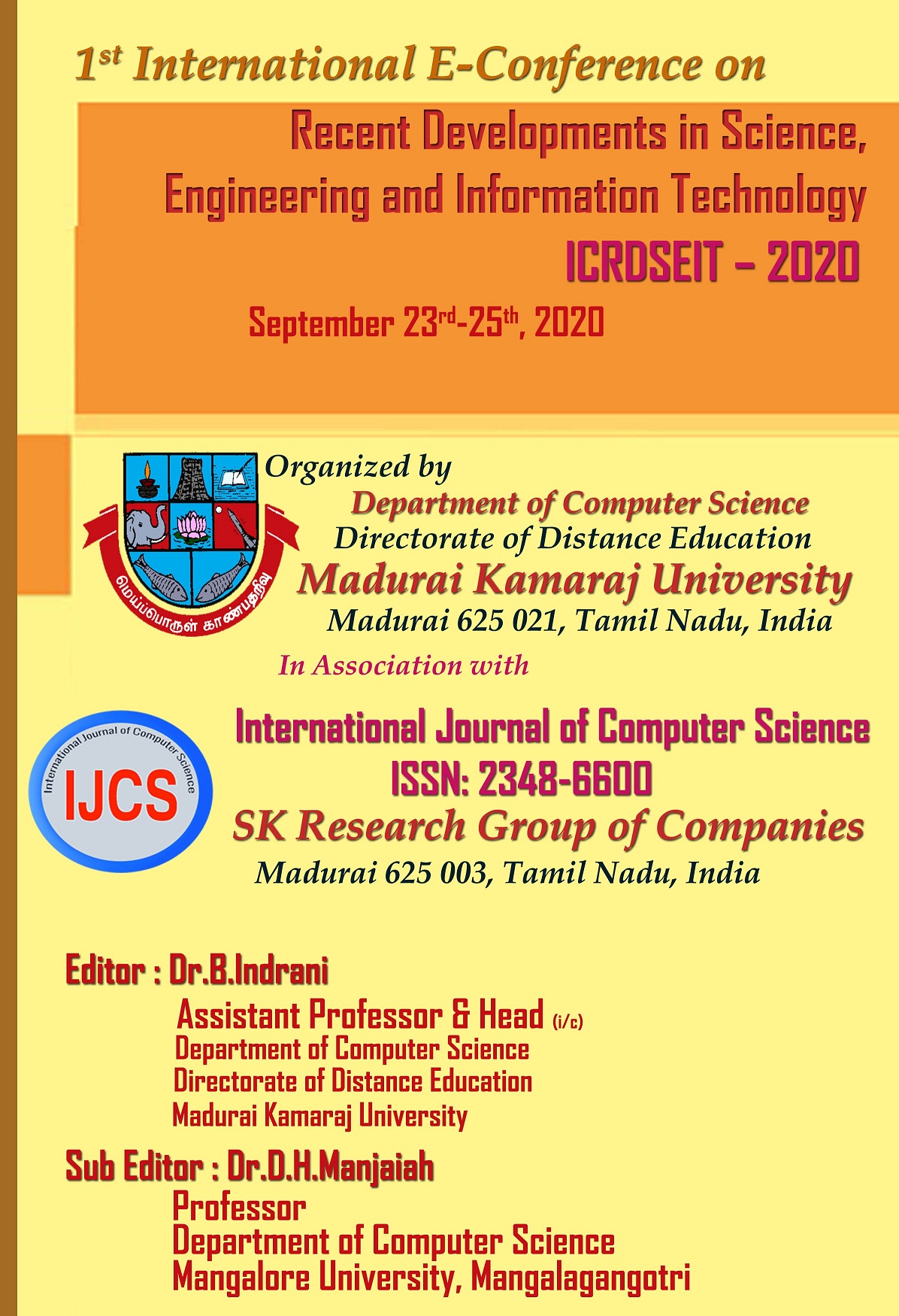An Improved K-Means Clustering Method for RCC Segmentation
1st International E-Conference on Recent Developments in Science, Engineering and Information Technology on 23rd to 25th September, 2020 Department of Computer Science, DDE, Madurai Kamaraj University, Tamil Nadu, India. International Journal of Computer Science (IJCS) Published by SK Research Group of Companies (SKRGC)
Download this PDF format
Abstract
Renal cell carcinoma or RCC, is also called hypernephroma, adenocarcinoma of renal cells, or renal or kidney cancer. Detecting RCC precisely from tiny Images is the primary and basic advance for an automated RCC division. The colleague of the RCC structure, surface and volume is required for the RCC division. The limits of the various organs are not noticeable because of the complex structure of the human body. This paper proposes an ant colony -based k-means technique which lessens the underlying group's issue of k-means bunching strategy. In this proposed technique level set strategies have likewise been utilized to improve the shapes of the RCC locale. The paper points in looking at the conventional k-implies strategy and improved k-implies technique utilizing subterranean insect state advancement based on mathematical precision and passed time. Test results acquired on infinitesimal RCC pictures show that the proposed approach got preferable division results over the previously existing one. The outcomes gave an expansion in the mathematical precision and a reduction in passed time which shows that the outcomes are better than those got with the existing strategy.
References
[1] S.Esneault, “CT Vessel Segmentation using a Hybrid Geometrical Moments/Graph Cuts Methods”, Biomedical Engineering, Vol.57, 276-283, IEEE 2010.
[2] C. Immaculate Mary et al. ,“Fully automated CT segmentation from SPIR image series”, Computers in biology and medicine, Vol.53, 265-278, Elsevier 2014.
[3] Jue lu et al. "Hierarchical, learning-based automatic CT segmentation", IEEE 2008.
[4] P.S Shelokar et al. “CT Segmentation by intensity analysis and anatomical Information in multi-slice CT images”, Springer 2009.
[5] Gang Chen and et al., “Improved level set for RCC segmentation and perfusion analysis in MRI”, Information Technology in Biomedicine, Vol.13, 94-103, IEEE 2009.
[6] Boykov, Y. Graph Cuts and Efficient N-D Image Segmentation. International Journal of Computer Vision (IJCV) 70 (2) (2006) 109–131.
[7] Krishnapuram, R. and Frigui, H. Competitive Clustering by agglomeration. Pattern Recognition 30 (7) (1997) 1109-1119.
[8] Adams, R. Seeded Region Growing. IEEE Transaction on Pattern Analysis And Machine Intelligence (PAMI) 6 (6) (1994) 641-647.
[9] Tseung, J. Robbins and Cotran Pathologic Basis of Disease. 9e (Robbins Pathology) 9th Edition, 2017.
[10] Ravi, M. and Hegadi, R.S. Detection of Glomerulosclerosis in Diabetic Nephropathy by Contour-Based Segmentation. Elsevier- Procedia Computer Science 45 (2015).
[11] Kaur, M. and Kaur, U. Comparison between k-means and hierarchical algorithms using query redirection. International Journal of Advanced Research in Computer Science and Software Engineering 3 (7) (2013).
[12] Gullanar M. Hadi and Nassir H. Salman. Image Segmentation Based on Single Seed Region Growing Algorithm. 1st International Conference on Engineering and Innovative Technology, 2016.
Keywords
K-means, Ant colony, RCC Segmentation, Region of Interest.

